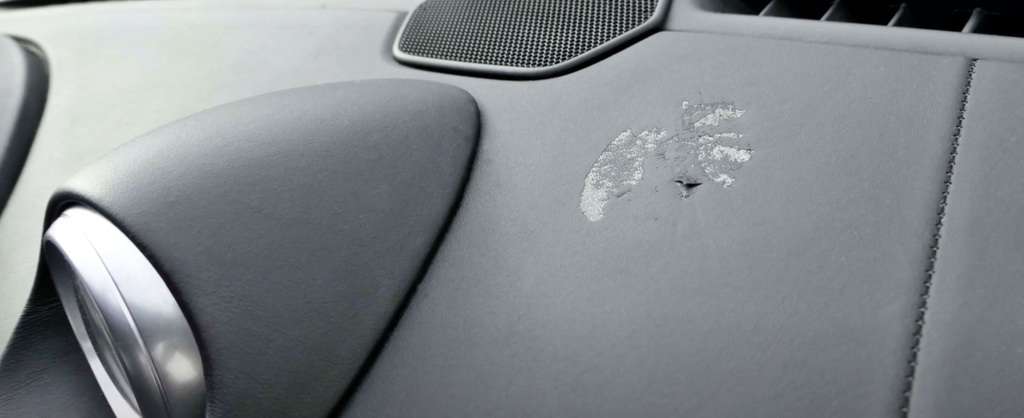To remove plastic scratches from car interiors, use a mixture of baking soda and water as a mild abrasive and gently rub the scratches in circular motions until they disappear. Over time, plastic surfaces in car interiors can develop scratches, which can be unsightly and diminish the overall appearance of the vehicle.
Luckily, there is an easy and affordable solution to this problem that can be done at home. By using a mixture of baking soda and water as a mild abrasive, you can gently buff out the scratches on plastic surfaces.
This method is effective for removing minor scratches and restoring the original look of your car’s interior.

Credit: avalonking.com
Understanding Plastic Scratches
Plastic scratches on car interiors can be a frustrating sight, especially when you want your vehicle’s interior to look pristine. These scratches can detract from the overall aesthetics of your car’s interior, making it appear worn out and less inviting. Understanding plastic scratches is the first step towards effectively removing them and restoring your car’s interior to its former glory.
What Causes Plastic Scratches?
Plastic scratches can occur due to a variety of reasons, ranging from daily wear and tear to accidental mishandling. By identifying the causes, you can take appropriate preventive measures to avoid future scratches. Here are the most common factors that contribute to plastic scratches in car interiors:
- Shoes and sharp objects: The friction caused by shoes rubbing against plastic surfaces can lead to scratches over time. Similarly, if you accidentally scrape a sharp object against your car’s interior, it can leave undesirable marks.
- Dust and debris: Dust particles and abrasive debris, such as sand or dirt, can settle on the plastic surfaces of your car’s interior. When these particles are left unattended, they can easily cause scratches when inadvertently rubbed against the plastic.
- Improper cleaning techniques: Using rough or dirty cleaning tools, such as abrasive sponges or dirty cloths, can inadvertently cause scratches on plastic surfaces while cleaning.
- Chemical exposure: Certain chemicals, like harsh cleaning agents or solvents, have the potential to damage and scratch plastic surfaces if used incorrectly. Ensure that you use appropriate cleaners designed specifically for car interiors.
Common Types Of Plastic Scratches:
Plastic scratches come in different forms, each requiring a specific approach for effective removal. Here are some common types of plastic scratches that you may encounter:
| Scratch Type | Description |
|---|---|
| Surface abrasions | Light scratches that only affect the topmost layer of the plastic surface. These scratches may be barely visible, but they can still reduce the overall appeal of your car’s interior. |
| Deep scratches | More noticeable and severe scratches that penetrate deeper into the plastic surface. These scratches are often the result of significant impact or rough handling and may require more intensive repair techniques. |
| Scuff marks | These are marks left by objects rubbing against the plastic surface without penetrating it. While not as deep as scratches, scuff marks can still detract from the appearance of your car’s interior. |
| Haze and haziness | Haze refers to a cloudy appearance on the plastic surface, which can result from a combination of scratches, abrasions, and dirt accumulation over time. It can make your car’s interior look dull and aged. |
Now that you have a better understanding of plastic scratches and their causes, you can proceed to tackle them effectively. In the next sections, we will discuss various methods and techniques to remove plastic scratches from your car’s interior, tailored to the specific type of scratch you are dealing with.

Credit: www.reddit.com
Diy Solutions For Removing Plastic Scratches
When it comes to your car’s interior, scratches on plastic surfaces can be a real eyesore. Whether it’s the dashboard, door panels, or center console, these scratches can easily make your car’s interior look worn out and neglected. However, you don’t have to rush to the nearest car detailing shop to get these scratches fixed. With a few simple DIY solutions, you can remove those pesky plastic scratches right at home. In this article, we’ll explore three effective methods to banish these scratches for good: using toothpaste, applying baking soda paste, and rubbing with alcohol.
Using Toothpaste
Toothpaste, the trusty friend sitting in your bathroom cabinet, can work wonders when it comes to removing plastic scratches. The mild abrasiveness of toothpaste can help smooth out the scratched surface, reducing their visibility. Follow these steps to effectively remove plastic scratches using toothpaste:
- Gather the necessary supplies: toothpaste (preferably non-gel), a clean microfiber cloth, and water.
- Start by cleaning the scratched area with water and a mild detergent. This will remove any dirt or debris that could potentially worsen the scratch.
- Squeeze a small amount of toothpaste onto the microfiber cloth.
- Gently rub the toothpaste onto the scratched area using circular motions. Apply light pressure but be sure not to scrub too vigorously, as it may cause more damage.
- Continue rubbing for a few minutes or until you notice the scratch fading away.
- Once satisfied with the results, wipe off the toothpaste residue with a clean, damp cloth.
- Dry the area thoroughly to reveal the restored plastic surface.
Applying Baking Soda Paste
Baking soda, another common household item, is known for its versatile cleaning properties. To remove plastic scratches using baking soda, follow these steps:
- Prepare a baking soda paste by combining baking soda with enough water to create a thick, spreadable consistency.
- Thoroughly clean the scratched area using water and a mild detergent.
- Apply a small amount of the baking soda paste directly onto the scratch.
- Gently rub the paste onto the surface using a soft cloth or sponge. Make sure to cover the entire scratched area.
- Continue rubbing for a few minutes, applying gentle pressure, until the scratch becomes less noticeable.
- Remove any excess paste with a clean, damp cloth.
- Dry the area thoroughly to reveal the improved appearance of the plastic.
Rubbing With Alcohol
Alcohol, specifically isopropyl alcohol, can effectively remove minor scratches from plastic surfaces. Follow these steps to use alcohol for scratch removal:
| Step 1 | Thoroughly clean the scratched area using water and a mild detergent. This will remove any dirt and debris. |
| Step 2 | Moisten a clean cloth with isopropyl alcohol. |
| Step 3 | Gently rub the alcohol-soaked cloth onto the scratched surface. Apply light pressure, rubbing in circular motions. |
| Step 4 | Continue rubbing for a few minutes or until the scratch starts to blend in with the surrounding plastic. |
| Step 5 | Wipe off any remaining alcohol residue with a clean, damp cloth. |
| Step 6 | Dry the area thoroughly to reveal the improved appearance of the plastic surface. |
With these simple DIY solutions, you can say goodbye to plastic scratches on your car’s interior. Whether you choose toothpaste, baking soda paste, or alcohol, these methods can help restore the pristine look of your car’s plastic surfaces without breaking the bank. Give them a try and enjoy a scratch-free, like-new interior.
Professional Options For Fixing Plastic Scratches
Discover professional options for removing unsightly scratches from your car’s plastic interior. From using baking soda and toothpaste to utilizing specialized scratch removal kits, you can easily restore the pristine appearance of your vehicle’s interior surfaces.
Plastic Scratch Repair Kits
If you want to tackle plastic scratches in your car interior on your own, plastic scratch repair kits are a convenient and cost-effective option. These kits typically contain all the necessary tools and materials to help you restore the finish of your plastic surfaces.
With a plastic scratch repair kit, you can remove those unsightly scratches and make your car interior look as good as new. The process usually involves sanding the scratched area with fine-grit sandpaper to create a smooth surface. Then, a specialized compound is applied to fill in the scratches and restore the original texture of the plastic. Finally, a clear coat is applied to protect the repaired area from future damage.
One advantage of using a plastic scratch repair kit is that it allows you to choose the level of repair. Depending on the severity of the scratches, the kit may offer multiple products of varying strengths. This gives you the flexibility to address both minor scratches and deeper gouges in the plastic.
Plastic Restoration Services
If you prefer to leave the plastic scratch repairs to the professionals, plastic restoration services are your best bet. These services are offered by specialized companies that have the expertise and equipment to restore your car interior plastic surfaces to their original condition.
When you choose a plastic restoration service, you can expect a thorough and meticulous process. The professionals will first assess the extent of the damage and determine the best course of action. They will then use advanced techniques such as heat treatment or specialized solvents to remove scratches and restore the plastic’s surface. The end result is a flawless finish that blends seamlessly with the rest of your car interior.
Plastic restoration services can save you time and effort, especially if you have multiple or severe scratches. While the cost may be higher compared to DIY options, the quality of workmanship and the long-lasting results make it a worthwhile investment.
Preventing Plastic Scratches
Keeping your car’s interior looking neat and scratch-free is essential for both its appearance and value. Plastic scratches can easily mar the overall aesthetic and diminish the resale potential. However, by taking preventive measures, you can avoid frustrating scratches and preserve the pristine condition of your car’s plastic interior components.
Using Protective Covers
One effective way to prevent plastic scratches in your car’s interior is by using protective covers. These covers act as a barrier between your belongings and the plastic surfaces, shielding them from potential scratches. When placing items on your car’s dashboard or seats, consider using soft fabric or silicone covers to provide a cushioning effect.
For instance, a non-slip silicon mat can be placed on your dashboard to hold your phone, preventing it from sliding around and potentially scratching the plastic surface. Additionally, seat covers made from soft and breathable materials offer protection against accidental scratches caused by keys, pens, or other sharp objects.
Avoiding Abrasive Materials
Another crucial step in preventing plastic scratches is to avoid using abrasive materials during cleaning and maintenance. Abrasive substances, such as rough cloths or scouring pads, can easily scratch and damage the smooth plastic surfaces in your car’s interior.
Instead, opt for microfiber cloths or soft-bristled brushes, which are less likely to leave scratches on the plastic surfaces. Microfiber cloths are gentle yet effective in removing dust and debris, while soft-bristled brushes can be used to clean hard-to-reach areas without causing any harm.
Remember, prevention is key when it comes to plastic scratches in your car’s interior. By using protective covers and avoiding abrasive materials, you can maintain the pristine condition of your car’s plastic surfaces and ensure a visually appealing interior.

Credit: www.youtube.com
Conclusion
To conclude, removing plastic scratches from your car’s interior can be a simple and cost-effective process. By following the tips and using household items, you can restore the appearance of your car’s interior and protect its value. Regular maintenance and proper care will go a long way in preventing future scratches and maintaining a polished interior.
Remember to always test any cleaning solution in a small, inconspicuous area before applying it to the scratched surface. With a little patience and effort, you can enjoy a scratch-free and pristine car interior.
